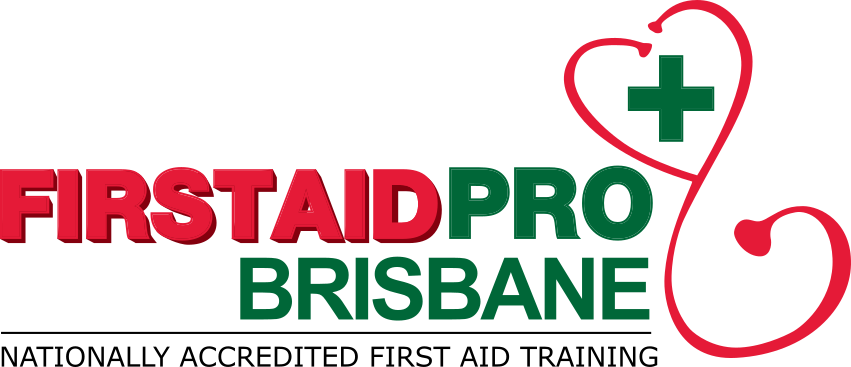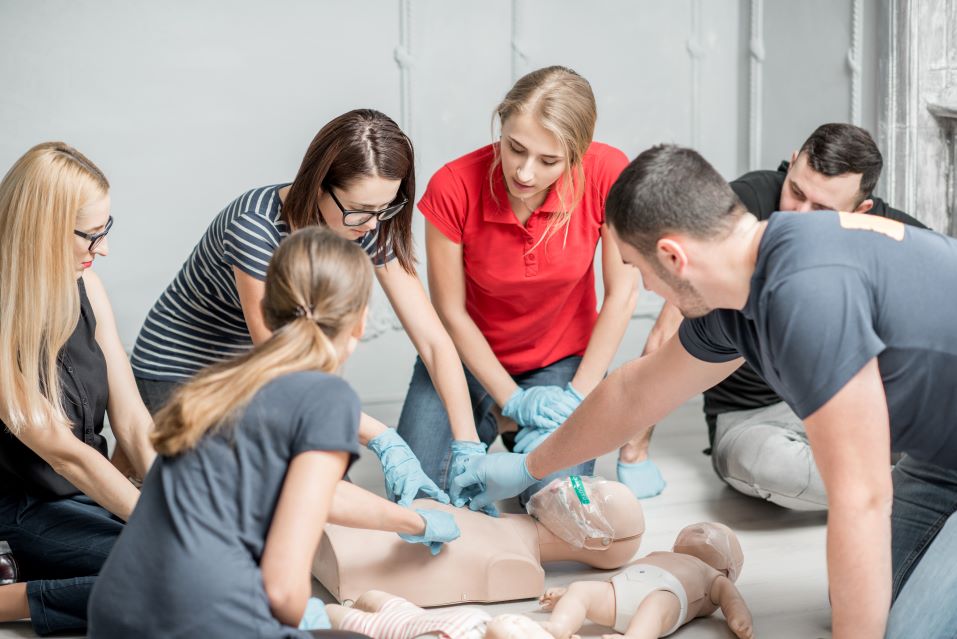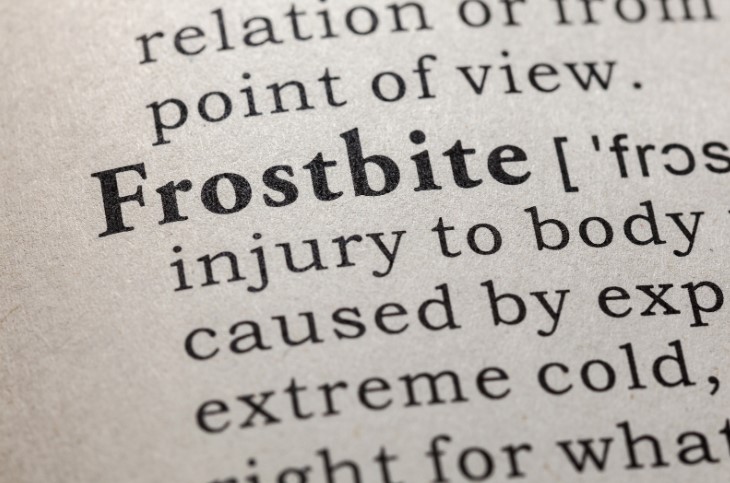AED is an important part of the chain of survival as it can restore normal heart rhythm in victims of sudden cardiac arrest.
Read on to learn more about this lifesaving device.
What Is An AED?
An automated external defibrillator (AED) is a portable, lifesaving device designed to treat people experiencing cardiac arrest. A cardiac arrest is a condition in which the heart suddenly (and unexpectedly) stops beating.
The AED system includes all necessary accessories, such as electrode pads and batteries, to be able to detect and interpret an electrocardiogram.
After the electrode pads are applied to the bare chest of someone who lost consciousness, is unresponsive, and is not breathing normally – the device will automatically detect if an electrical shock is needed to help restore the heart’s normal rhythm.
There are two main types of AED – one for public access and one for professional use.
- Public access AEDs are often located in airports, schools, universities, community centres, government buildings, hospitals, and other public locations. These are intended to be used by bystanders who have received basic first aid and CPR training.
- Professional use AEDs are mainly used for first responders such as paramedics and emergency medical technicians (EMTs), who receive additional training.
How Does It Work?
Here’s a step-by-step guide on how the AED device works.
- Start by turning on the device and following the voice prompts. Some AED models turn on automatically when you open the lids.
- Attack two electrodes (or the sticky pads with sensors) on the person’s chest.
- The electrode pads will then send the information about the person’s heart rhythm to a processor within the device. The AED system will then analyse the rhythm to find out whether an electric shock is required.
- If a defibrillation shock is needed, the device will use its voice or visual prompt to instruct when to press a button to deliver a shock. Some devices have built-in prompts that announce when a shock will be delivered, even without intervention by the user.
The use of AED, along with the performance of CPR, must happen within minutes after a person is suspected of an out-of-hospital cardiac arrest (OHCA). This allows them to have double or triple chances of survival.
Bystanders and first aid responders only have a few moments to assess the situation and begin the steps in the cardiac arrest chain or survival. In those moments, it is important that they get their hands on the lifesaving equipment they need, which is an AED.
How To Find AED Locations?
Defibrillators are usually located in large public areas, such as:
- Schools – front office, staff room, university gym
- Community Centres – foyer or front entrance
- Hospitals – closest nursing stations or hospital wings
- Commercial Buildings – ground level, next to the evacuation and escape routes
- Sports Clubs – golf, football, soccer, swimming, hockey and cricket clubs, mostly in the function rooms
- Gymnasiums – hanged and signed on the walls near the equipment
- Shopping Malls And Centres – guest services and public washrooms
- Public Libraries – front entrance
- Zoos – front office and staff room
Make sure that defibrillators are located in areas where they are clearly marked, brightly illuminated, and easily accessible.
Consider placing the AEDs in locations where many people are gathered together, such as near confined spaces or outdoor worksites where emergencies may occur.
It is also a good idea to add CPR face masks, non-latex protective masks, safety razors (for shaving off chest hairs), absorbent towels, and a first aid kit near where the AED is placed.
Learn What AED Is
AEDs are lifesaving devices that are easy to use, but proper training from a trusted and qualified RTO is highly recommended. Many organisations offer AED training (in connection with CPR course), including First Aid Pro.
Formal training in CPR and AED will teach you how to recognise the signs of a cardiac arrest, when to call emergency services, how to do CPR, and how to use an AED.
Many misconceptions about this device prevent people from using it. But with proper training and confidence, you can extend the time while waiting for EMS to arrive and eventually save a person’s life.
The best way to be prepared is to commit to and maintain an updated CPR certificate. The more bystanders who know what to do in an emergency, the better chance we all have of surviving a cardiac arrest.
It is never too late to learn CPR and how to properly use a defibrillator. Contact us to find out more about our CPR and AED courses today.








